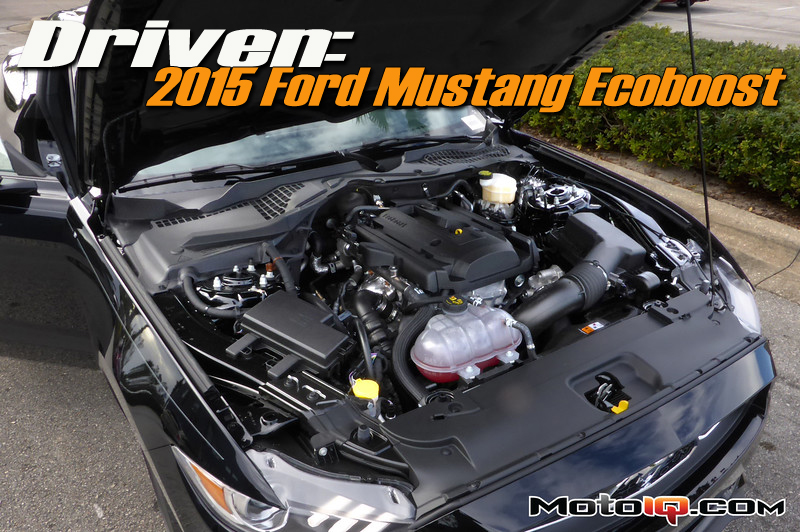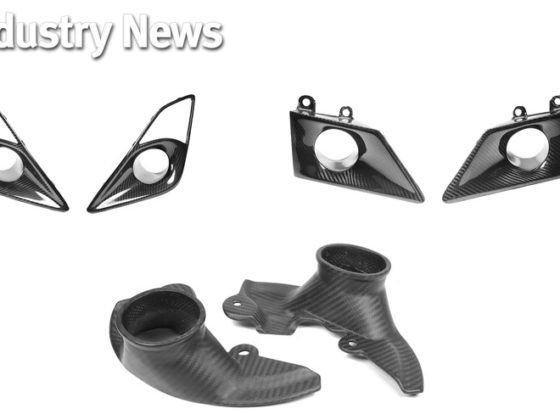We test Ford’s new 2015 Mustang EcoBoost to determine if a turbocharged 4-cylinder Mustang bridges the gap between the American Hot-Rodding community and Import Tuners. How does the Ecoboost stack up against rear-wheel drive icons such as the Honda S2000, turbocharged all-wheel-drive cars like the Subaru WRX, and hot hatches like the VW Golf GTI? Read on to find out.
In December of last year, I was at Gary Yeomans Ford in Daytona Beach to test the all-new 2015 Ford Mustang GT. I originally intended to do a back-to-back comparison of the 5.0L GT and the new turbocharged 2.3L four-banger. Unfortunately for me, 2015 Mustangs were flying off the lot and in short supply. There was only a handful of manual GTs for me to test and no Ecoboosts. Since then, I’ve seen increasingly more 2015 Mustangs on the road and in late January, I found myself back in Daytona for round 1 of the IMSA Continental Tire Sports Car Challenge series (where I race a Ford BOSS 302R), and had the opportunity to finally test an Ecoboost Mustang.
 Gary Yeomans Ford in Daytona Beach, FL has rows of 2015 Mustangs on their lot. They have been very accommodating and were gracious enough to allow me to test a base Ecoboost and Performance Package equipped cars.
Gary Yeomans Ford in Daytona Beach, FL has rows of 2015 Mustangs on their lot. They have been very accommodating and were gracious enough to allow me to test a base Ecoboost and Performance Package equipped cars.Since I have already covered the major changes, details, and features of the all-new S550 chassis with its independent rear suspension in my review of the 2015 Ford Mustang GT, I will only discuss differences relevant to the EcoBoost Mustang and how it compares to some of the most popular tuner platforms and cars that are commonly seen at your local track day.
Why the return of a 4-cylinder turbocharged Mustang? For the first time in its history, the Mustang is a global platform that needs to satisfy much higher expectations and broader requirements from safety, fuel economy, and refinement. We are a bit spoiled in the US with relatively cheap gas (especially in the past few months) and minor gas-guzzler taxes. In Europe and Asia, fuel costs 2-4 times as much per gallon and there are heavy taxes on the size of a car’s engine. Because of this, the 2.3L Ecoboost Mustang is a very appealing option that will likely be the number one selling Mustang worldwide. From a power standpoint, keep in mind that only 6 years ago in 2009, the 4.6L SOHC 3-valve V8 Mustang GT made less power (300hp) than the new Ecoboost.
But we don’t live in Europe or Asia, so why not buy a V8? While I don’t see the hardcore, supercharger-loving V8 Mustang fans jumping ship for a turbocharged 4-cylinder, I think the Ecoboost Mustang will appeal to a far more diverse range of buyers due to its greater fuel economy, peppy engine, tuning potential, and more affordable price point. Since it’s competitively priced, I think the Ecoboost will take some market share away from the hot-hatch and turbocharged import market because its rear-wheel-drive platform really appeals to driving enthusiasts and track-day warriors.
 From the outside of the car, there are very few visual differences between the 4-cylinder Ecoboost and the V8. The front Grill does not have the cool ‘fangs’ of the V8, while the 50th Anniversary Package frames the pony with chrome bars that extend across the width of the grill.
From the outside of the car, there are very few visual differences between the 4-cylinder Ecoboost and the V8. The front Grill does not have the cool ‘fangs’ of the V8, while the 50th Anniversary Package frames the pony with chrome bars that extend across the width of the grill. The hood on the Ecoboost is void of any heat extracting vents like those on the GT.
The hood on the Ecoboost is void of any heat extracting vents like those on the GT. The Ecoboost’s bar and plate intercooler shines through the lower grill with unobstructed airflow for improved cooling.
The Ecoboost’s bar and plate intercooler shines through the lower grill with unobstructed airflow for improved cooling.


